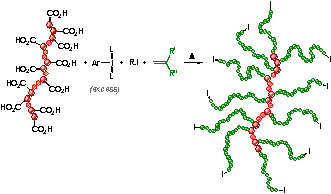58th Annual Report on Research 2013 Under Sponsorship of the ACS Petroleum Research Fund
Reports: DNI751030-DNI7: Carboxylic Acids as Latent Initiators of Radical Polymerizations Mediated by Hypervalent Iodine Compounds: Synthesis of Functional Polymers and Unimolecular Micelles for Emulsification of Oils in Water
Nicolay Tsarevsky, PhD, Southern Methodist University
Copyright © 2014 American Chemical Society













